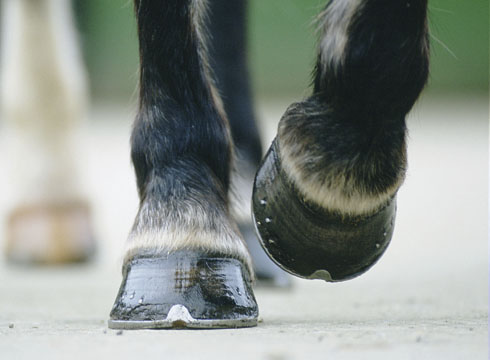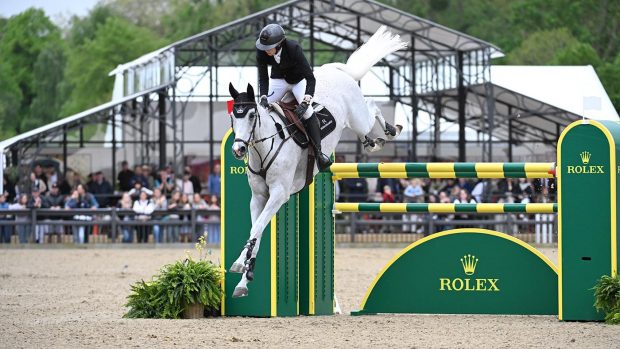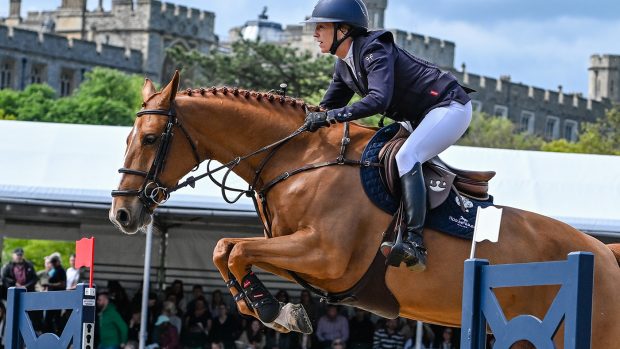Is it right for shod horses to have their shoes taken off over the winter months during a break from work? Richard Stephenson MRCVS weighs up the options…
Horses, whether shod or not, have a tough, horny hoof capsule, while human feet, unless accustomed to walking barefoot, are covered with soft, sensitive skin. However, we need to remember that many horses will struggle to make the transition from being shod to going without horseshoes and, in some cases, they will suffer pain and discomfort to a level which is simply unacceptable. It is fashionable in some circles to view unshod horses as “natural” and shod horses as being the victims of an outdated and harmful practice. But is it natural for a modern horse to be unshod, and what are the potential benefits and pitfalls?
While shoeing is frequently described as a necessary evil, it is important to appreciate that the modern horse is the result of many centuries of selective breeding which has rarely concentrated on hoof quality. With the possible exception of some native pony breeds, there is little “natural” about our horses. We must also recognise that even the so-called native pony has an enormous variety of different environments to cope with in different parts of the UK. One foot management approach cannot be made to fit all circumstances or all horses.
Before thinking about taking shoes off during winter, we need to ask why we put them on in the first place. Farriers will say that shoes offer protection from wear and provide grip — for the majority of horses in active work this is true, but do they really need shoes while at rest?
The answer will depend on how strong your horse’s hoof walls are, his current foot balance and the surface he is being turned out on. Every horse must be considered as an individual.
Good farriery should ensure that the shoe supports the normal physiological function of the foot. The most caudal nail (the one furthest back) should be at the widest point of the hoof, so that normal expansion and contraction of the heel areas can occur during motion.
However, without a doubt, shoes alter the way in which the hoof wall wears down. In a shod horse, there is virtually no wear in the toe region of the hoof. This is because it is nailed to the shoe, meaning there is no friction between the hoof wall and the metal. But there is wear in the heel region, because the hoof wall here moves across the surface of the shoe when the foot absorbs concussion during footfall.
This is why farriers have to be particularly skilful in paring the foot before applying a shoe, as more needs to be trimmed off the toe than the heel region.
Many shod horses suffer from collapsed, long, sloping heels which, as well as creating poor foot balance, can become the focus for corn or abscess formation.
It can be useful to remove the shoes from affected horses to allow more natural hoof wear for a period of time (around eight to 12 weeks), but this must be accompanied by regular trimming from a skilled farrier.
Continued below…
Like this? You might also enjoy reading these:
Some say barefoot is natural, others argue that modern competition horses are purpose-bred and need shoes. Polly Bryan consults the

The barefoot debate: Do horses need shoes to compete? H&H asks the experts *H&H Plus*

Put your best foot forward – and make it shine with one of these great hoof oils

No foot, no horse – hoof supplements to help maintain healthy hooves

Saddle up and go exploring in these great hoof boots

Subscribe to Horse & Hound magazine today – and enjoy unlimited website access all year round
Consider these points if your horse is going without shoes this winter:
1. Is there a problem with your horse’s feet — if he has good, strong hoof walls, a straight hoof pastern axis and is sound while shod, why risk taking the shoes off?
2. Think about the ground your horse will be turned out on. Hard, stony ground may cause soreness due to solar bruising, while wet and soft ground could allow the hoof wall to grow and become flared or even break off.
3. Your horse’s feet will wear according to the ground type surprisingly rapidly, and the foot balance will alter within four to six weeks.
4. What is for certain is that removing the shoes is not an alternative to providing good foot care. The feet still need to be inspected and picked out on a daily basis. Trimming by a qualified farrier every four to six weeks will be just as important during a period without shoes as when shod.
Be prepared with these useful tips
1. Hooves with bad grass cracks are highly likely to deteriorate severely without shoes.
2. Unshod horses still need regular hoof care from a registered farrier.
3. If your horse looks uncomfortable, is taking short strides or is reluctant to walk out without shoes, going unshod may not be for him — listen to what he is telling you.
4. Horses with strong hoof walls may cope well without shoes if not worked regularly.
5. Horses with collapsed heels may benefit from a period without shoes to allow more even heel growth, but only if accompanied by high-quality hoof care.
6. If you are going to remove shoes for a period of time, don’t do it when the ground is very hard, either from dry weather or frost.
7. To achieve any benefit from removing the shoes, they need to be off for around three months in a horse with a normal speed of hoof growth.
Horse & Hound magazine, out every Thursday, is packed with all the latest news and reports, as well as interviews, specials, nostalgia, vet and training advice. Find how you can enjoy the magazine delivered to your door every week, plus options to upgrade to access our H&H Plus online service which brings you breaking news as it happens as well as other benefits.





